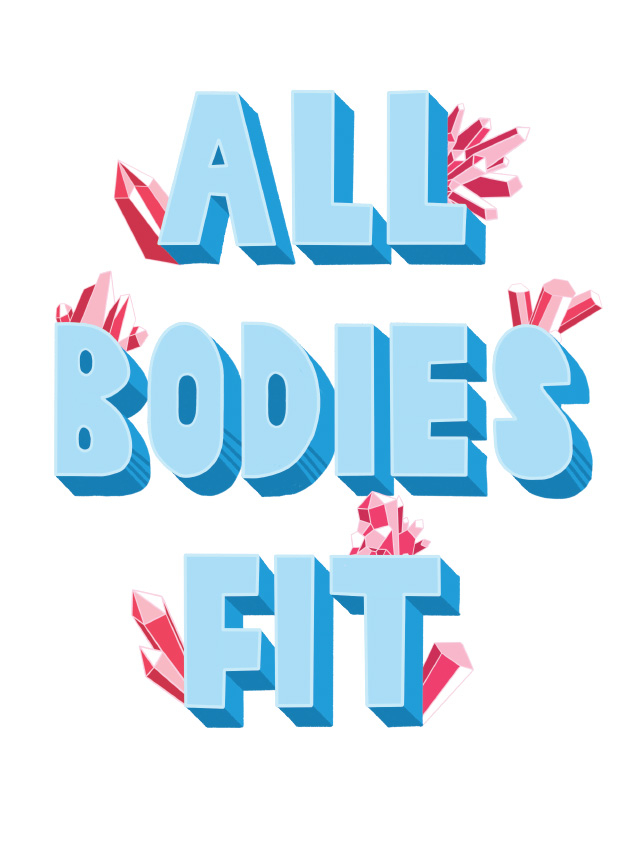
There’s an addiction creeping into the homes and lives of Woodbury residents, and even though it’s talked about less than more common diagnoses, it’s shattering lives and stereotypes in its wake.
“I didn’t even know what I had. I thought it was weird that I was eating all of the time and that I was constantly thinking about my next meal,” 41-year-old Michelle Johansen says. “I was always trying to think about ways that I could compensate for what I ate by exercise or restriction. I was always feeling like I needed to start over.”
At the forefront of the battle against food-related disorders is the Emily Program, a clinic for eating disorders that opened its east metro location in Woodbury in 2013.
The “addiction” we’re talking about here is actually an eating disorder: binge eating disorder (BED), to be exact, a relatively new diagnosis in the world of food disorders, compared with anorexia or bulimia, which are better known. Johansen has been a weekly Emily Program client for the past year and a half, commuting in to Woodbury from her Spring Valley, Wisconsin, home. “I didn’t know that binge eating was a [potential] diagnosis, and I thought that I would be turned away,” Johansen says. “I thought they were going to tell me this wasn’t the place for me. It was relieving being told that what I was dealing with was something real and that I could work through it.”
First referenced in 1959 as the condition of overeating to the point of discomfort, at least twice a week every week for six months, BED’s definition changed in 2013 when it was officially recognized as an eating disorder. It’s now defined as a frequency of binge eating one time a week over just three months. Studies suggest this change in definition increased the diagnosis by as much as 30 percent, which means 5.6 million women and 3.1 million men in the United States today suffer from this disorder.
This is a trend that is proving true in Woodbury, with BED alone accounting for 65 percent of east metro clinic patients.
But to understand the impact the Emily Program is having in Woodbury, a bit of background is required. For starters, what are eating disorders? East metro site director Jennifer Nelson emphasizes they are not choices, fads or diets. According to the National Institute of Mental Health, eating disorders are made up of a range of mental conditions expressed through abnormal eating habits. These generally stem from an obsession with food, body weight or body shape, and often result in serious health consequences, sometimes even death. Nelson says eating disorders might be caused by several factors, including genetics, cultural influences and personality traits, such as perfectionism and impulsivity.
A common misperception about eating disorders is the belief that this is a young person’s diagnosis. “While puberty is a really big time of vulnerability,” Nelson acknowledges, “the fastest growing population is middle-age women. We treat patients from ages 8 to 80.”
Ambling toward mid-life herself, Johansen found out about The Emily Program because she works in health care, “but I didn’t know exactly what services they offered,” she says. “I was nervous and skeptical about coming, because it was the first time I was vulnerable enough to say I had a problem.”
This reaction is something Nelson sees often, she says. “When people are older in age, they don’t realize that adults young and old can get eating disorders—and can get help,” she says. “You can have recovery and release from this. You can be free.”
Johansen credits seeking help with restoring her life, and she’s so glad she made that first call. “The process was non-threatening. The team was here to guide me while I did the work,” she says. “I felt compassion and confidentiality. It is a safe place to talk about what I want to talk about. When you first acknowledge you have an eating disorder, it is intimidating and scary, but once you meet the team, those feelings go away.”
After an initial assessment meeting—which is free—clients like Johansen receive the option to stay on for an individualized treatment program, which is a series of advisory meetings with anyone from dietitians to psychologists to mentors to acupuncturists and many things in between, all customized based on the need. That said, the team works with individual schedules and life priorities, too, as was the case with Johansen.
“I was recommended intensive treatment, but could not do that for several reasons, so I was able to cater my treatment to meet my needs,” she says. “I had an individual team and did weekly appointments with a therapist and dietitian. I was able to work on finding my self-worth, and my relationship with food has completely changed. As my needs have changed, I’ve decreased the frequency of my appointments.”
A typical day of treatment includes a therapeutic meal, and meetings with a therapist and a dietitian. Extended day-long care adds various therapies and a second meal. “We expect that the eating disorder is also going to come to the meal, and our therapists help clients get through that,” Nelson says. “It’s really where the magic happens, where change comes about. It’s very in the moment: Here’s how the eating disorder is activated, then we help them use the tools they’ve learned to combat it. The goal is to help clients identify the triggers of their eating disorder and to start recognizing them, then use tools to take care of yourself before those triggers occur.”
Therapeutic meals are structured to real-life scenarios, such as in-house by yourself, a family setting or in-community, as it would be during the work day or an evening out with friends. There’s attention to things like what to do when you’re on a road trip and you need to get your food from a gas station, or how to eat buffet-style around graduation season, Nelson says.
The Emily Program itself is Minnesota-based, first opened in an old St. Paul fire station in 1993 by psychologist Dirk Miller. Now known for its compassionate approach to, in particular, outpatient care, there are more than 500 employees across clinics in four states offering group, individual and family therapies.
Lobbying for insurance coverage is one of the nonprofit’s fundamental initiatives, says chief strategy officer Jillian Lampert, as many insurance companies do not recognize eating disorders as illnesses; others consider them chronic or pre-existing conditions. The typical time frame for recovery is one to five years.
She adds that there are genetic predispositions to eating disorders, but regardless of the cause, early intervention matters. Family and friends should address the things they’re noticing in a supportive, non-accusatory way, but talking about it is key. “Say things like, ‘I’m curious about what’s happening,’ or, ‘I’ve noticed this pattern,’” Nelson says. “All people can promote body positivity. All bodies fit. All bodies are OK. There doesn’t need to be shame or stigma. Continue to offer support, and be present, urge them to seek care.”
The Emily Program also offers a friends-and-family night, intended for those affected by eating disorders, not clients themselves. “It’s important to take care of your own health, and your witness can help others facing similar difficult situations,” she says.
Ultimately, clients wean themselves off of the program. “For me, maintenance is realizing that some of my triggers are going to come up again,” Johansen says. “It’s knowing that you don’t have to allow the triggers to spiral you back into your eating disorder and remembering that you have the tools to be in control—and that the eating disorder doesn’t control you anymore and that it won’t soothe you … Part of maintenance is telling people you have an eating disorder, even when it is scary. You bring awareness and want people to know where you are coming from and don’t feel ashamed of it.”
Eating disorders come in all different forms, shapes and sizes, Nelson says. There are professionals to help you and guide you in a safe, compassionate, non-threatening manner. Johansen concurs: “Just take the first step, and reach out to someone. Even if you have a small sliver of wanting to seek help, don’t be afraid to do it. I still have my whole life to live, and it feels so good to have freedom from my eating disorder.”
Common Eating Disorders
Anorexia Nervosa
People who are underweight consider themselves overweight, to dangerous results; severely restricting calories; generally developed in adolescence; affects more women than men; two types, restricting type, or the bingeing/purging type.
Bulimia Nervosa
Frequent consumption of large amounts of food in a short period, then forced vomiting, fasting, laxatives or excessive exercise; most common during adolescence and early adulthood; more common in women, but not as common as anorexia.
Binge Eating Disorder
Eating large amounts of foods rapidly, in secret and until uncomfortably full, despite not feeling hungry; no purging; feelings of lack of control or distress, such as shame, disgust or guilt; common in all genders; common throughout adulthood, with increased cases in middle ages.
Ruminatino Disorder
People regurgitate food they previously chewed or swallowed, rechew it, then re-swallow it or spit it out; a voluntary behavior, not reflux; if not resolved in infancy, severe weight loss and malnutrition; all stages in life.
Avoidant or Restrictive Food Intake Disorder
New name for an old disorder, previously reserved for children younger than 7; equally common in boys versus girls; lack of eating due to lack of interest or distaste for certain smells, tastes, colors, textures (beyond normal behaviors, such as picky eating in toddlers or a lower food intake in older adults).
Pica
Craving nonfood items such as ice, dirt, soil, chalk, soap, paper, hair; can occur in all ages; most common in children and pregnant women.
Show Love: Supporting Someone You Care About
How should you approach someone you care about who is struggling with eating disorder symptoms? These tips from The Emily Program help you keep perspective and provide needed support.
- Remember, eating disorders are illnesses. You didn’t cause the eating disorder.
- Accept your limitations: You can’t make them want to get better.
- Accept the person for who they are. Remember that they are an individual; they are not their eating disorder.
- Be sensitive, and be firm.
- Compliment strengths that have nothing to do with appearance, eating or food.
- Seek support for yourself.
- Respect how and where your loved one wants their eating disorder discussed. You absolutely need and deserve support, and you can get it while also honoring their need for confidentiality.
- Ask your loved one how you can support their meal plan.
- Plan non-food related activities for the times right after meals to help redirect attention and energy. Focus on the other things in life, not just discussions of weight, eating, exercise and food.
- Be a good role model when discussing food, body and weight—your own and others’.
- Set an example: Participate in family therapy (if recommended), talk openly about your feelings, and actively identify and resolve problems.
- Know your health insurance, because you might need to advocate for coverage.
- Convey that you believe in them. Your support is invaluable to your loved one.
The Emily Program
576 Bielenberg Drive, Suite 250
651.645.5323
Twitter: @EmilyProgram
If you think you know someone struggling with an eating disorder, call the National Eating Disorder Association helpline at 800.931.2237.









